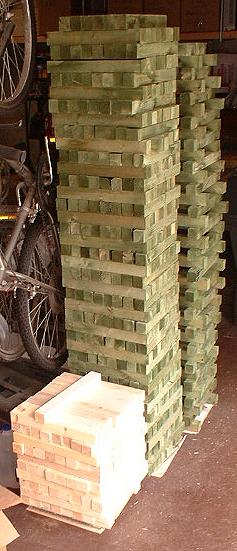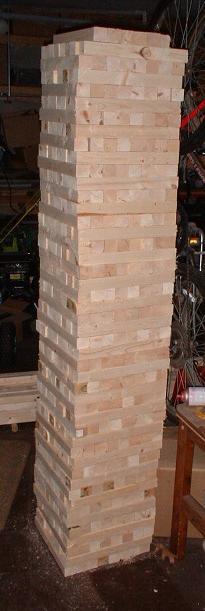Building a Backyard Railroad
Visit the Island Pond Railroad Home Page.If you are thinking about building your own track, consider this ... Don't. It is easy to under estimate the investment in materials and labor required to build and maintain even a small track. If you can - find and join a local club. Pay your dues, help with the maintenance and upgrades, and use their track. You can then put most of your hobby allotted cash into your trains. And you will have the chance to make friends with others who have similar interests. If, on the other hand, you live too far from the nearest track or they run on a schedule that doesn't work for you, and you insist on running large scale trains, you may have no other option. If you want to lay your own track, please do the math first and do all of it. You sometimes see ads from guys who bought rail, found out how big the job really was, and are now selling the rail. This is the story of building my railroad. New Hampshire, where I live, has a few private tracks, but no clubs. The nearest club is in Holliston, Massachusetts, a 2.5 hour drive. They only run on Sunday, making them useless to us. Joining that club was not an option. Here is a summary of the materials that were required for may railroad.
The lumber cost is the number of boards required times the price per board. The tie size I'm using allows me to get 14 ties from an 8 foot long "two by four". At the time I purchased lumber for my ties, pressure treated lumber was $2.69 for a "two by four".
ties/joiners, (1800+132)/14 = 138
stringers, 132/2 = 66
---
boards needed 204
cost per board x $2.69
----
lumber cost $548.76
Then there are other costs
rail joiners 130 x.70 $91
ballast $150
drywall screws $25
spike nails $35
----
total misc $301
-  This is "Western" profile aluminum rail in 10 foot lengths. I chose to paint it with rusty metal primer to look like steel. - 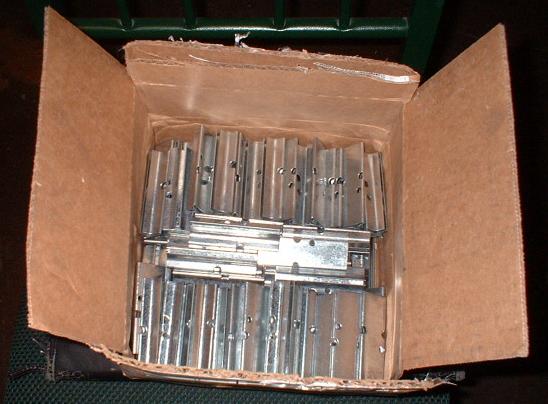 Cannonball Limited sells a nice galvanized folded steel rail joiner. Here's a box of 100. -  And this is what 20,000 pounds of 3/8" gravel ballast looks like. Use larger rock. It will drift less in the rain.
And now for the grand total
Rail $1050
Lumber $550
Misc $300
-----
Grand total $1900
cost per foot ... $3.62!
And this doesn't include labor which is also monumental.
Building Track PanelsMy track panels are 98 inches long including the gap between adjacent panels. I needed a place to build them that was long enough. So I built this bench out of some of the lumber destined to become ties or stringers. On this workbench is a template, printed on my computer that tells exactly where to place the ties for straight panels, and panels for 38, 40, and 100 foot radius curves. The actual template can be viewed here. Notice the stringers underneath the bench.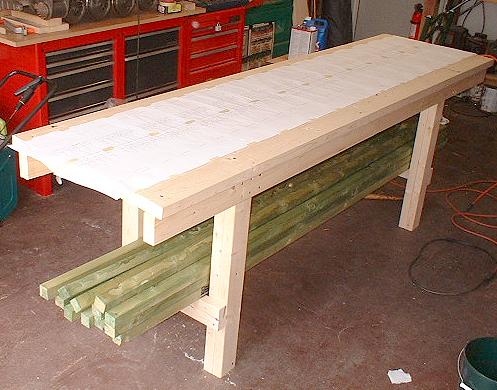 - 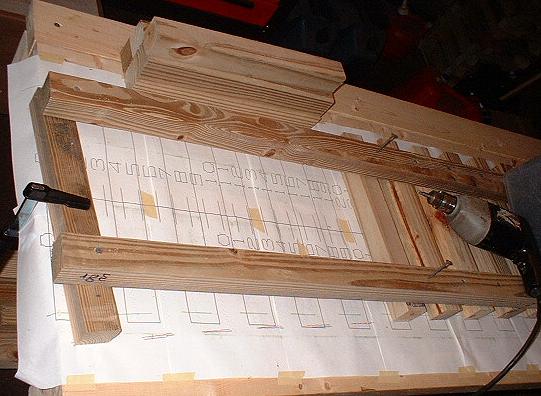 - The photo below is a stack of track sections 8 feet long. These have a 40 foot radius. All track sections are built on stringers. - 
- On to Next Page |
